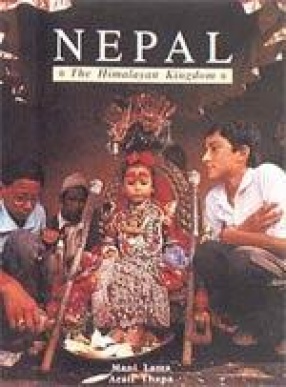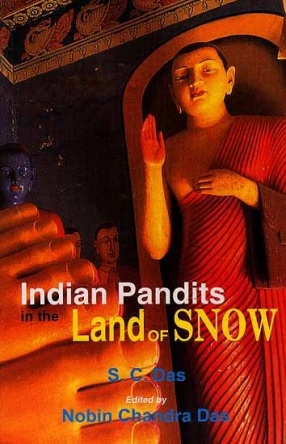Nepal: The Himalayan Kingdom
In stock
Once upon a time, or so goes the legend, there existed a valley amidst beautiful mountains. In this valley was a lake as blue as the sky. And in the centre of the lake rested a lotus that radiated magnificent and sparkling rays of the purest blue. The rays spread far and wide creating a celestial atmosphere so powerful that it drew divine attention. Legend has it that Manjushree who was passing by was so charmed by the beautiful sight that he caused the water to be drained with a swipe of his magical sword, so that a holy city could be built there and its people would live close to the gods. Thus was created Nepal-the abode of gods. The lotus, according to legend, was the manifestation of Lord Swayambhunath who stands tall today as the protecting deity overlooking the city and guarding it against all evil. The spectacular pair of divine eyes painted on the stupa (‘chorten’ in Tibetan) that surveys all of Nepal is revered by Tibetans and Nepalis alike who constitute the major population of the country. Sifting facts from legend might not be easy in Nepal where the two are deeply entwined. Moreover, there are no sources of written documentation. But today, geologists claim that Kathmandu valley did lie under water at one time. Ask any Nepali and he will proudly tell you the story of how this magnificent country came about. Legends are many, handed down from generation to generation, each surpassing the other in glory and fascination. In fact, it would not be wrong to say that no country in the world is perhaps so steeped in myths and legends as this country. In a country where literacy is at its lowest level, legends have become a way of life. Many of them are filtered while being verbally retold and passed on so that it is quite natural to encounter a variation of the same story. Nevertheless, they have become a part of popular folk culture, meticulously preserved from family to family. Nepal covers an area of 145,391 square kilometers. Approximately 19 million people inhabit the land. It is a heavily mountainous country with about 14 to 15 percent land being cultivated. It has a multi-party parliamentary democracy headed by a figurehead monarch, King Birendra Bir Bikram Shah Deo. The Prime Minister of the country is Right Honourable Sher Bahadur Deuba, leader of the Nepali Congress Party. The official language is Nepali. There are more than 30 languages spoken and around dozens of dialects used in the hills by ethnic groups. Among these Newari, the language of the Newars is mainly spoken in the valley. Tibetan is spoken mainly in the hills while Indian languages mainly Bhojpuri, can be heard among the people of Terai or the tropical region of Nepal which is close to the Indian border. The Nepalese currency of about Rs 56.00 is equivalent to US $ 1.00. The topography of Nepal can be divided distinctly into three main regions-the Himalayas or the alpine belt (highlands) mainly in the northern part of the country. It is defined by its jagged mountain peaks and towering snow-capped range. In such wild terrain can be found the homes of Tibetans and Sherpas who live a hard life supported by the yak, a multi-purpose animal used for ploughing and carrying luggage. Its hair is spun into yarn and its meat is eaten with relish. Just below the Himalayas is the central belt or the midlands conspicuous for its valleys. This belt, characterised by adequate rainfall and a mild subtropical climate has been a favourite with the Tibeto-Mongoloid or the tribal group consisting of agricultural groups like the Rai, Limbu, Magar, Newar, Sunwar, Gurung and Tamang who have cultivated most of the land. The Kathmandu valley falls in this belt. Environmentally, it is proving to be a disaster and Nepalis are now moving on to the Terai or the lowlands which is the third belt of this country. The Terai is a flat, predominantly dry land, with sweltering summer heat. Enclosing this part of the land is the Siwalik mountain range. Nepalis here consist mainly of Brahmins and Chettris who have taken to paddy farming. Much of the rice or ‘bbat’ which is so favoured by Nepalis is grown here. The Terai is generally known as the granary of Nepal.





There are no reviews yet.